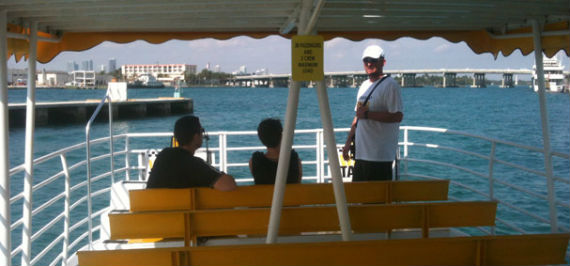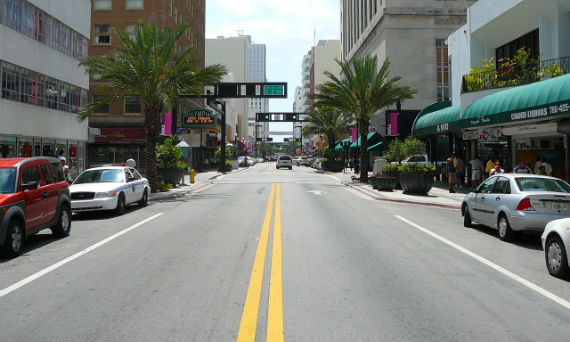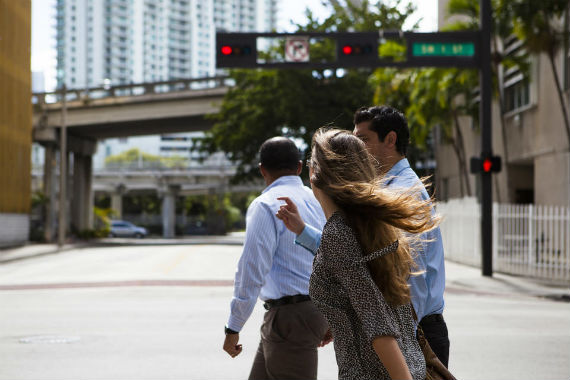Trending
5 transit fixes downtown needs to accommodate new development

Downtown Miami has seen many new developments rise in the last few years – with more towers on the way – and mixed-use projects like Brickell City Centre and Miami Worldcenter will bring in even more workers and residents. With the increase in population presumably comes new traffic and parking headaches.
The Real Deal spoke with Douglas Elliman Florida CEO Jay Parker and ONE Sothebys’ Alexandra Peters-Rutten about the ways they think downtown Miami could improve its transportation options to accommodate all of the new development.

Rendering of All Aboard Florida’s Miami station
#1 Increase use of rail
Alexandra Peters-Rutten, a global real estate advisor at ONE Sotheby’s International Realty, told The Real Deal that rail needs to expand wherever it’s physically possible. “There’s no chance of any underground transportation – most metropolitan cities have that advantage,” she said.
Jay Parker points to increased use of the Metromover in downtown as an option for alleviating congestion. “New developers are interested in the people mover, and they’re facilitating use that historically has not been appealing,” Parker said. He is less confident that new Metrorail lines will actually be built – a plan that’s been in the works for decades – but believes increased demand for public transit will eventually make state and local officials recognize the need and act on it.
There are some rail projects that offer glimmers of hope to those in the industry developing and selling downtown. All Aboard Florida will build a Miami-to-Orlando rail system, and the first leg linking the city to West Palm Beach is scheduled for completion in 2016.
And Tri-Rail is seeking $69 million in funding for infrastructure improvements that would allow its trains to stop at All Aboard Florida’s Miami station. The connection would allow commuters to have an uninterrupted “one seat ride” on Tri-Rail from West Palm Beach to downtown Miami without having to switch to Metrorail, according to Tri-Rail spokeswoman Bonnie Arnold.

Uber has run into legal problems during its South Florida expansion.
#2 Encourage use of ride-sharing services
Parker uses ride-sharing app Uber daily and finds it preferable to driving to a meeting. “For maybe $20, I’m dropped off at the meeting and taken back to my office. If I take my car, I can’t be productive and have to spend time and money finding a parking spot,” he said.
Peters-Rutten echoed that sentiment and described Uber as a “life saver” for getting around through each day of Art Basel.
Uber and Lyft’s entry into South Florida and other markets has not been without controversy, as the apps have run afoul of local laws involving taxis. But Parker believes that the utility of the services will resolve the problems. “Governments will ultimately find themselves overwhelmingly compelled to support such initiatives,” he said.

Water taxis would make some destinations easier to reach, real estate industry experts say.
#3 Expand the use of water taxis
Peters-Rutten thinks South Florida’s waterways could be better used, referencing a Miami version of New York’s Staten Island ferry. “There are so many destinations that can be reached via water,” she said.
Parker believes that water taxis present an opportunity for entrepreneurs to seize upon and help alleviate congestion.

Flagler Street in downtown Miami
#4 Rework downtown Miami’s streets
Getting around for Art Basel was difficult, even before accounting for the protests that shut down Interstate 195 last weekend, Peters-Rutten said. She cited a lack of a “go-to” street for easily getting around downtown, but knows creating a new artery would be a major undertaking.
She suggested that another solution to help future growth would be to rework existing streets. “There’s a myriad of one-way streets, and some of those should be reconfigured,” she said.

A more pedestrian-friendly downtown could ease traffic
#5 Entice even more people to move downtown to cut out commuting
Parker noted that downtown has evolved in the last few years to attract more residents. Creating even more developments that entice people to live closer to where they work could ease current and future congestion by alleviating the need for driving everywhere, he said.
“As people start to live and work in these areas, they can move with greater ease,” Parker said. New developments bringing in fine restaurants, retail shops and movie theaters create incentives for people to stay in downtown and choose to live there, he added.
Peters-Rutten cited the congestion that often occurs when events end at the American Airlines Arena. “It’s a big mess when a game lets out. The vision of the future is that you walk back to your home.”




